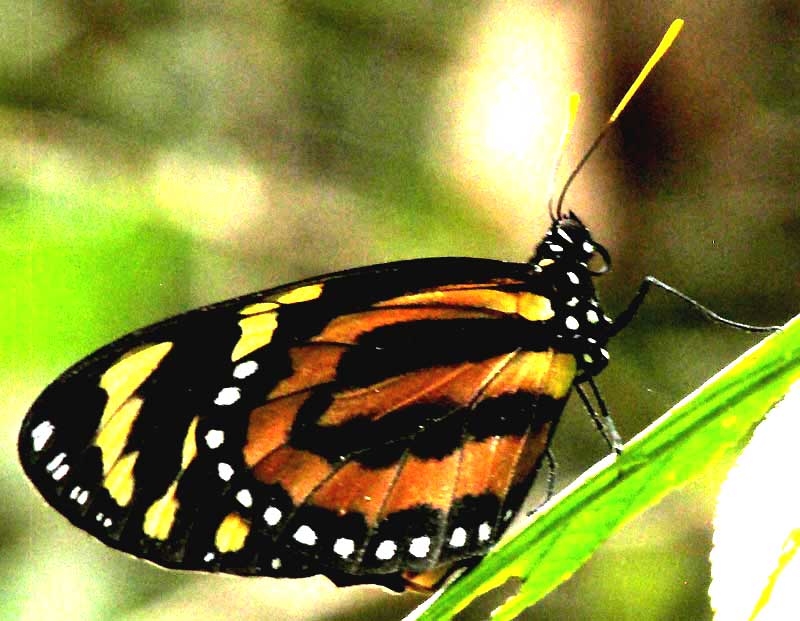Excerpts from Jim Conrad's
Naturalist Newsletter
Notes from an April 1, 2019 camping trip in Ceibal Archaeological Park about 15kms east of Sayaxché, Petén department, northern lowland GUATEMALA TROPICAL MILKWEED BUTTERFLY

As I wandered forest trails between Maya ruins in Ceibal Archaeological Park, the handsome butterfly shown above turned up perching on a leaf. I'd not seen that species before, so I got its picture, later sent it to volunteer butterfly identifier Bea in Ontario, and quickly got the delighted response that it was LYCOREA HALIA ATERGATIS. That name has three parts instead of the usual two because the third part, atergatis, is the subspecies name.
Over the broad distribution area of Lycorea halia, from Mexico to Peru, and much of the Caribbean, about nine subspecies have arisen, each having evolved to better deal with local environmental conditions. The English names "Tropical Milkweed Butterfly" and "Tiger Mimic-Queen" seem about equally used for both the species and subspecies.
Taxonomically, Lycorea halia belongs to the huge Brush-footed Butterfly Family, the Nymphalidae, and the same subfamily that the north's Monarch Butterfly belongs to. You might remember that caterpillars of Monarch Butterflies feed on milkweeds, which contain toxins that cause vomiting and nausea to predators who try to eat the caterpillars. The Monarch's bright colors and bold patterns warn predators to stay away. All this also is true for our closely related Tropical Milkweed Butterfly and its caterpillars, which do eat tropical milkweeds, as well as Papaya and fig tree herbage.
Apparently, though, even Tropical Milkweed Butterfly caterpillars have problems with full-strength milkweed sap. On the Tropical Milkiweed Butterfly's species' page at the "Butterflies of the Amazon and Andes" website, I read that young caterpillars nibble rings into the milkweed's leaf tissue to cut off the defensive toxins before eating the area enclosed within the ring, while older caterpillars bite through the leaf veins causing the toxins to bleed out before feeding.